Sweet Cheese Pie, Branzoaice, or Poale-n Brau: Romanian sweet cheese pie recipe with cottage cheese and raisins.
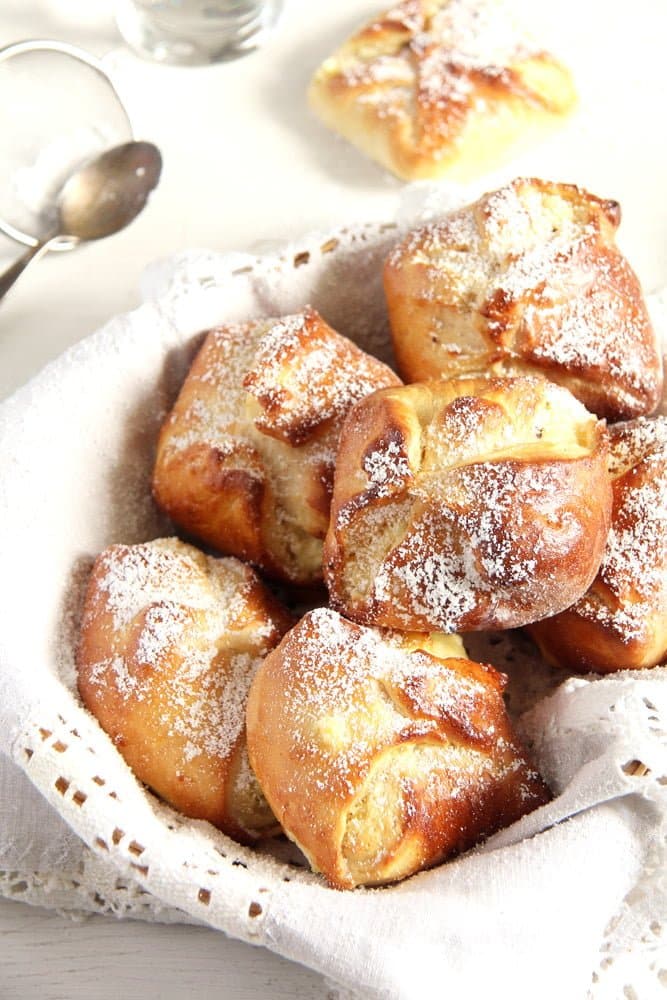
Jump to recipe
What are Branzoaice?
Like the Moldavian Yeast Pastries – Mucenici and the Romanian Cheese Pie, these Branzoaice or Romanian Sweet Cheese Pies are a staple in Moldavian or Moldovan cuisine. They are utterly anchored in the Moldavian food tradition but so good that just about anybody in Romania knows them.
The names of these cheese pies are rather strange: Branzoaice, roughly translated as Cheesies, or Poale-n Brau, roughly translated as Laps in the girdle. While the name Cheesies is rather obvious, I could not understand why the second name.
It originates in a habit that peasant women in Moldova had of stuffing the corners of their aprons in the girdle to make sure that it wouldn't get in the way while they washed or worked in the house. I suppose this kind of folding and stuffing the apron was somewhat similar to the way of folding the pastries. So now you know, and I do too. 🙂
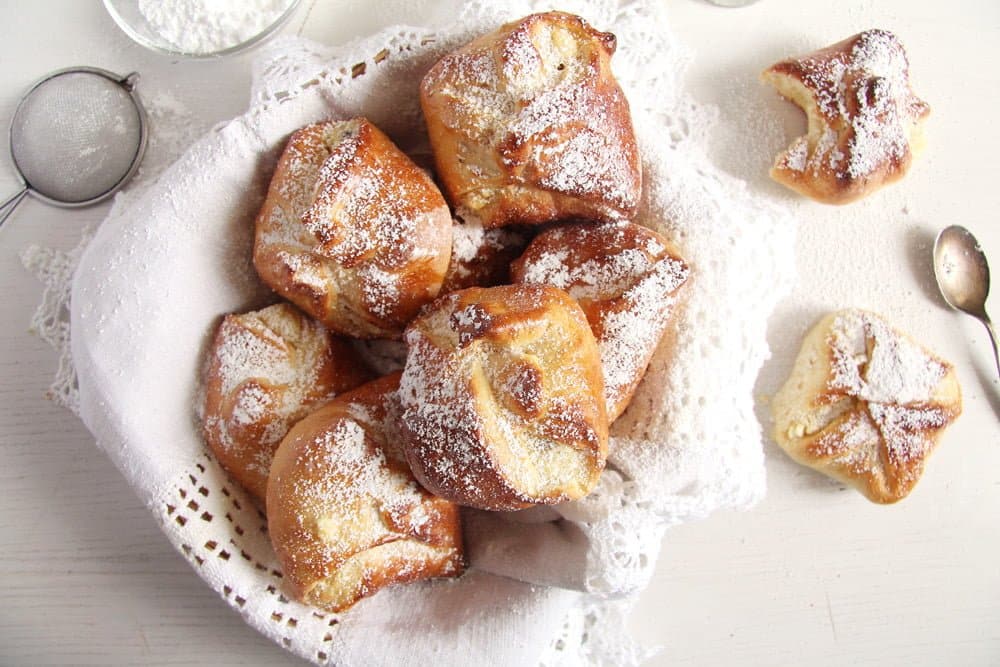
What do you need?
The common yeast dough ingredients:
- Flour, yeast, sugar, milk, eggs, vegetable oil, and salt.
- You can use either a cube (42 g/ 1.5 oz) of fresh yeast or 30 g/ 1 oz/ 2 tablespoons active dry yeast.
For the filling, you will need cottage cheese, raisins, semolina, sugar, vanilla, lemon zest, and a pinch of salt.
Cheese:
- Originally, the pastries were made with branza de burduf, a typical Romanian cheese that is rather salty and has a very strong taste. The cheese was sweetened with raisins and sugar.
- Modern versions of these pies are made with the Romanian branza de vaci. This kind of cheese is mild, making the pies more delicate in taste and texture.
- I chose cottage cheese as the main ingredient for the pastries because I find that to be quite similar to the Romanian intended cheese.
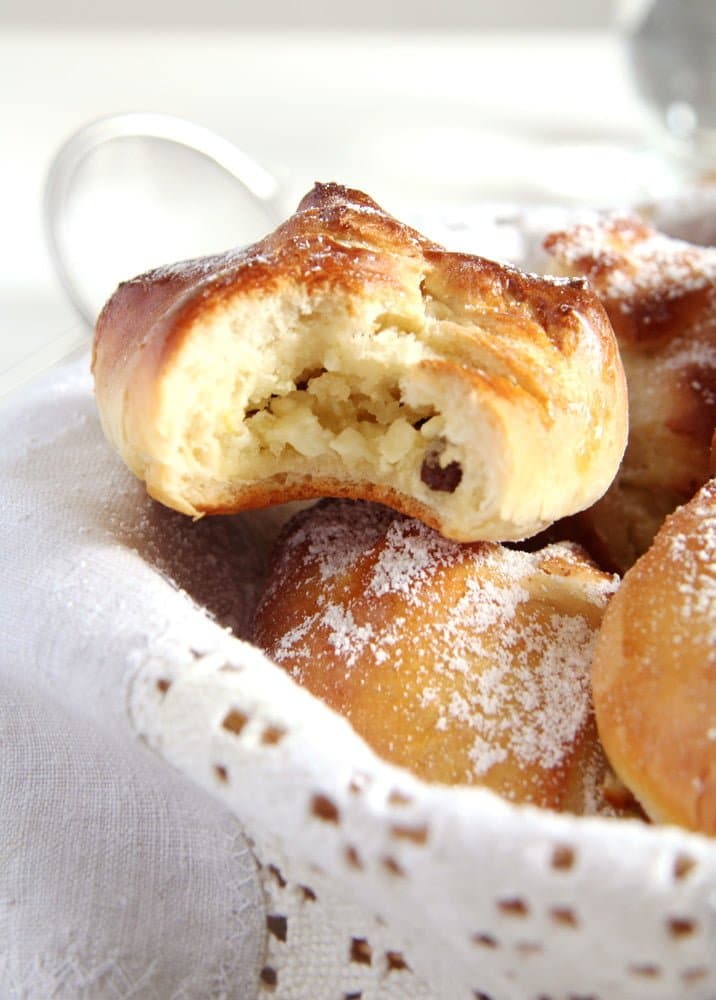
How to make Romanian sweet cheese pie?
Place the cottage cheese in a fine-mesh sieve and let drain for several hours.
Yeast dough:
- Working with yeast is not difficult, especially if you have a food processor which can knead the dough for you. Making yeast dough without the food processor is easy as well, but it requires a bit more physical work on your side and a bit more dedication.
- Sift the flour in a large bowl or in the bowl of the food processor. Crumble the fresh yeast on top or sprinkle the active dry yeast. Add a little milk and sugar, and let it get frothy for about 15 minutes.
- Add the rest of the ingredients and knead well.
- Let rise, covered, in a warm place for about 1 hour.
- If the kitchen is not warm enough, I place the bowl in the oven and turn on the oven lights, just the lights and NOT the oven.
Filling:
- Mix the drained cheese with the rest of the ingredients (except the egg needed for brushing).
Savory alternative: fill the pastries with crumbled feta cheese. Add a little salt and pepper and some chopped dill if you like.
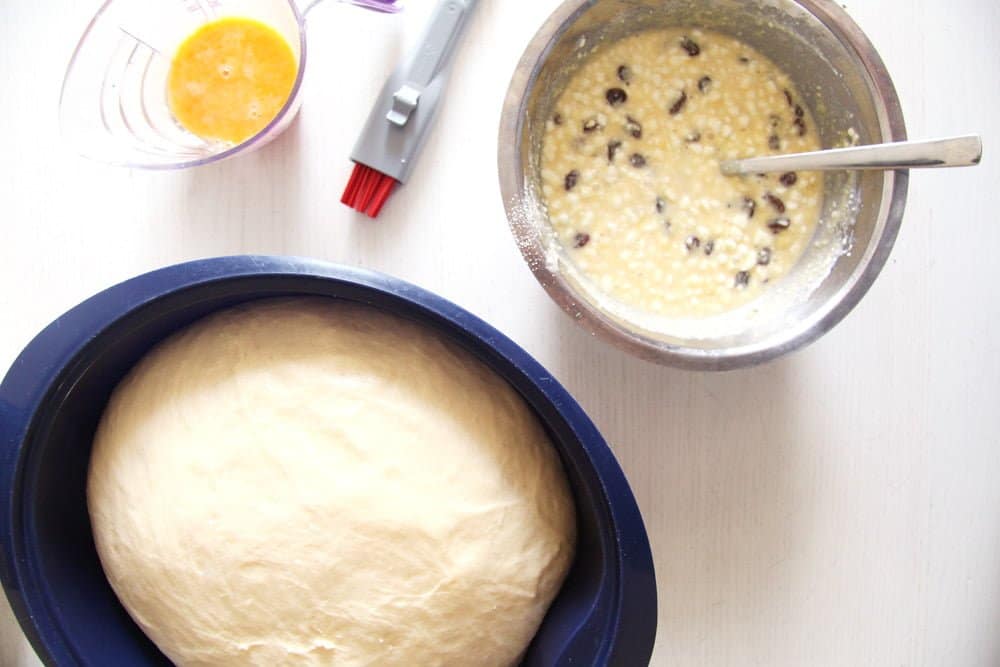
Form the pies:
- Roll the dough into a large rectangle about 3-4 mm/0.11-0.15 inches thick.
- Divide it into 16 smaller squares. Divide the filling between the squares, about 1-2 teaspoons, into each square.
- Brush lightly the edges of the pies around the filling.
- Take two opposite corners of the pastry and press them well together, in the middle, with your fingers.
- Take the other two opposite corners and press them well with your fingers as well. Press along the lines that are formed as well to close the pockets. They should look more or less like an envelope.
- Press the corners of the pastry very thoroughly together to make sure that the pies are properly sealed. Otherwise, they will open during the baking process, and although they will taste just as delicious if opened, they will not look so pretty anymore.
- Brush the pastries with the beaten egg all over and bake for about 15-20 minutes or until deeply golden brown.
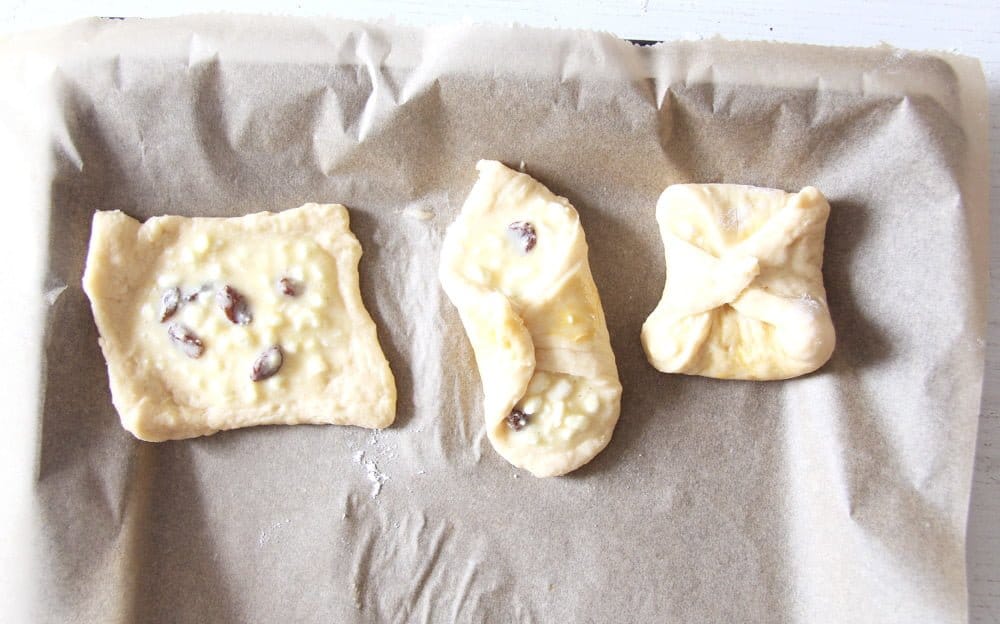
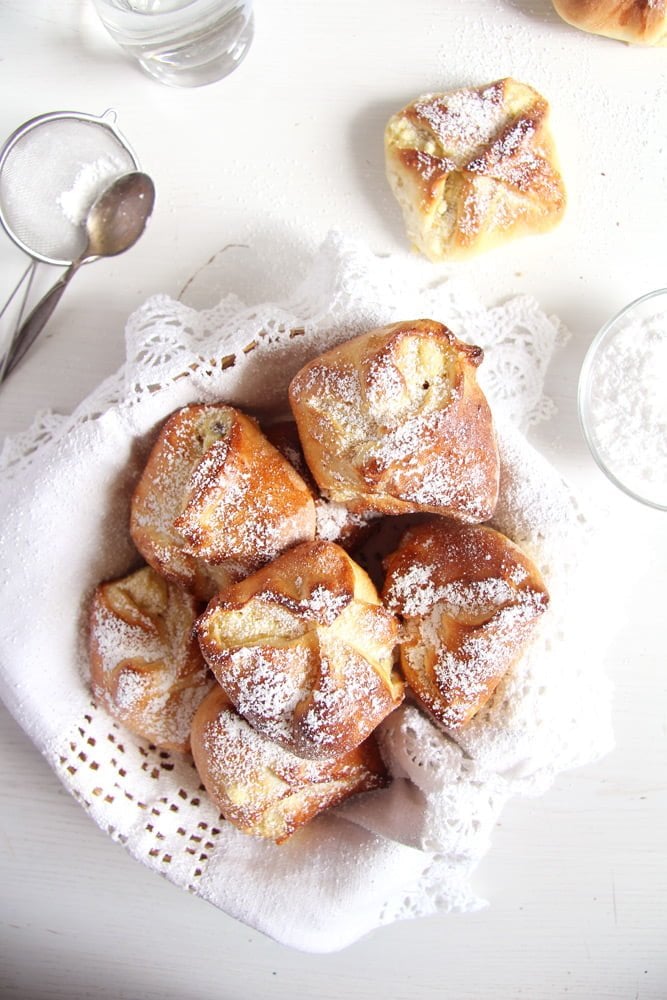
More Romanian pastries:
- Mucenici - yeast pastries with walnuts and honey
- Cremeschnitte - Puff pastry filled with vanilla custard
- Cozonac - Romanian sweet bread
- Romanian Apple Pie
- Romanian Lemon Cake - Alba ca Zapada or Snow White

Romanian Sweet Cheese Pies – Branzoaice
Ingredients
- Yeast dough:
- 450 g/ 15.9 oz/ 3 ¾ cups all-purpose flour
- 42 g/ 1.5 g fresh yeast OR 30 g/ 1 oz/ 2 tablespoons active dry yeast
- 200 ml/ 6.7 fl.oz/ scant 1 cup lukewarm milk
- 4 tablespoons sugar divided
- 2 eggs
- ½ teaspoon fine sea salt
- 4 tablespoons vegetable oil
- Filling:
- 500 g/ 17.6 oz/ 2 ¼ cups cottage cheese
- 1 egg
- 150 g/ 5.3 oz/ ¾ cup sugar
- 1 teaspoon vanilla extract
- 1 teaspoon grated lemon zest
- a pinch of salt
- 100 g/ 3.5 oz/ ½ cup raisins
- 65 g/ 2.4 oz/ ⅓ cup semolina
- 1 small egg for brushing
- icing sugar
Instructions
- Start by draining the cottage cheese in a fine-mesh sieve thoroughly, for about 3 hours.
Yeast dough:
- Sieve the flour in a large bowl or in the bowl of your food processor. Make some space in the middle, crumble the fresh yeast or sprinkle the active dry yeast in there, add 2 tablespoons of the lukewarm milk, and 1 tablespoon of the sugar. Let rest for about 15-20 minutes until quite frothy.
- Add the rest of the lukewarm milk, 2 eggs, the remaining 3 tablespoons sugar, and the salt. Mix well and add the vegetable oil.
- Knead well with the food processor until the dough is elastic and doesn't stick anymore, but keep in mind that the dough should be soft. If you knead the dough by hand, you might have to add a little bit of extra flour when kneading, but don't overdo it, the dough should remain soft.
- Form a ball and let it rise in an oiled bowl for 1 hour, covered with a clean kitchen cloth and in a warm place. I usually place the bowl in the oven and turn the oven light on. Just the oven light, not the oven itself! The dough should have more than doubled its size by the end of one hour.
Filling:
- Place the drained cottage cheese into a bowl. Add the lightly beaten egg, sugar, vanilla extract, lemon zest, salt, raisins, and semolina and mix well.
Form:
- Preheat the oven to 180 degrees Celsius/ 350 degrees Fahrenheit. Line the baking tray with baking paper.
- Roll the dough into a large rectangle about 3-4 mm/0.11-0.15 inches thick. Divide it into 16 smaller squares. Divide the filling between the squares, about 1-2 teaspoons into each square.
- Beat the egg needed for brushing the pies in a small bowl. Lightly brush the free edges of the pies around the filling.
- Take two opposite corners of the pastry and press them well together, in the middle, with your fingers. Take the other two opposite corners and press them well with your fingers as well. Press along the lines that are formed as well, so that the pastries are closed. Make sure that the pockets are really well sealed so that they will not open in the oven.
- Brush the pastries with the beaten egg all over and bake them for about 15-20 minutes or until deeply golden brown.
- Let cool slightly, dust with icing sugar, and enjoy warm or cooled.


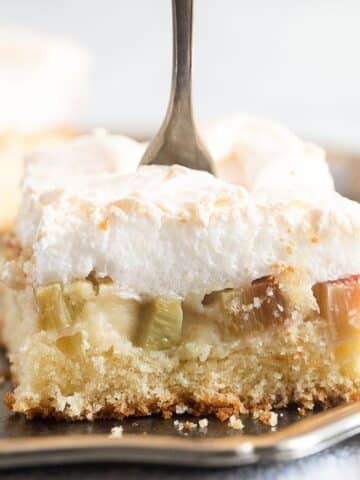
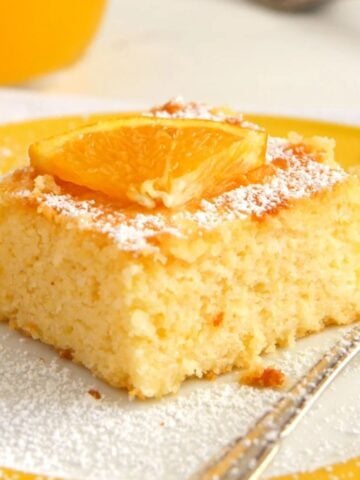
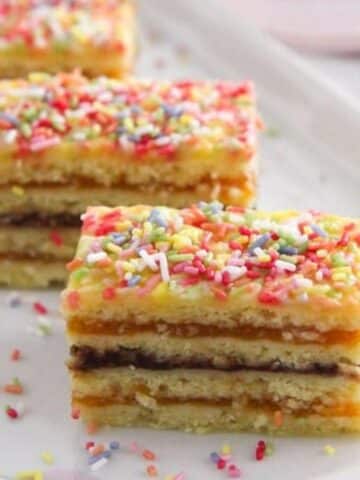
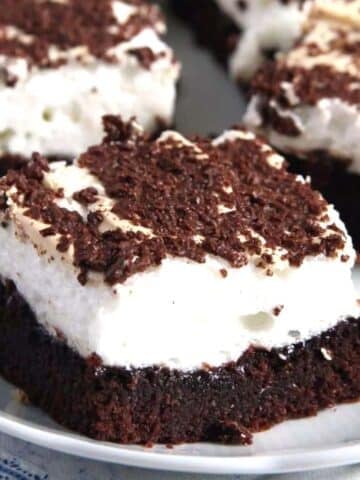

Loretta Porter says
made these. my family loved them, wonderful.
Adina says
That's so cool! Thank you for the feedback.